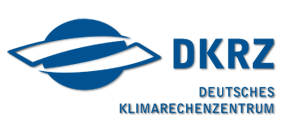SCENARIO PROCESS FOR AR5
PURPOSE AND AUDIENCE
These web pages provide an overview of a new process under way for developing scenarios to support climate change research. The pages also point to more detailed information maintained by participating research organizations on different aspects of this process. These pages are intended for researchers who may wish to participate in scenario development, who use scenarios in their research, or who wish to learn more about current efforts to improve coordination of different fields of climate research. References with more detail are included on the reference page and embedded throughout the text. Please address questions or provide comments to DDC feedback.
SCENARIOS FOR CLIMATE RESEARCH
Introduction
The implications of anthropogenic climate change for environment and
society depend not only on the response of the Earth system to changes
in atmospheric composition, but also on the driving forces and responses
by humans through changes in technology, economies, lifestyle and
policy. In climate change research, scenarios describe plausible
trajectories of different aspects of the future that are constructed to
investigate the potential consequences of anthropogenic climate change.
Scenarios represent many of the major driving forces - including
processes, impacts (physical, ecological, and socioeconomic), and
potential responses ? that are important for informing climate change
policy. They are used to hand off information from one area of research
to another (e.g., from research on energy systems and greenhouse gas
emissions to climate modeling). They are also used to explore the
implications of climate change for decision making (e.g., exploring
whether plans to develop water management infrastructure are robust to a
range of uncertain future climate conditions). The goal of working with
scenarios is not to predict the future but to better understand
uncertainties and alternative futures, in order to consider how robust
different decisions or options may be under a wide range of possible
futures.
IPCC's role
The IPCC has commissioned and approved several
sets of scenarios for climate research over the past two decades.
New scenarios are created periodically to reflect advances in research,
new data, and to support the increasing sophistication of integrated
assessment and climate models. The IPCC decided
in 2006 to catalyze the development of new scenarios by the
research community, rather than developing them itself, with the
intention that those scenarios, and research building on those
scenarios, would underpin its 5th
Assessment Report scheduled for completion in 2013/14.
New process
The process by which these new scenarios are being produced differs from
earlier scenario development. Previously, the first step was to produce
socio-economic scenarios that give rise to alternative future greenhouse
gas and aerosol emissions, then to evaluate the effects of those
emissions on the climate system, and then to assess the implications of
those climate changes, along with differing socio-economic futures and
other environmental changes, on natural and human systems. Experience
shows that this full, linear process takes about 10 years.
The new process aims to both shorten the time required to develop and apply new scenarios, and to ensure better integration between socio-economic driving forces, changes in the climate system, and the vulnerability of natural and human systems. Rather than starting with socio-economic scenarios that give rise to alternative greenhouse gas emissions, the new scenarios take alternative futures in global greenhouse gas and aerosol concentrations as their starting point. These so-called Representative Concentration Pathways (RCPs) can be used in parallel:
- by Earth System Models (ESMs) to explore future changes in physical and biogeochemical responses to changing atmospheric composition and radiative forcing, and
- by Integrated Assessment Models (IAMs) to explore alternative socio-economic conditions that would result in such future atmospheric composition changes.
During the parallel phase of the new process, climate modelers are conducting new climate model experiments to produce climate projections using the time series of emissions, concentrations and land use from the four RCPs. These model projections will be used to construct new climate scenarios for application in Impacts, Adaptation, and Vulnerability (IAV) and IAM studies.
Work by the scientific community is also expected to produce quantitative scenarios of socio-economic changes, including changes in demographics, technology, energy and land-use consistent with the RCP pathways. Note that RCPs in themselves are not linked to any one socio-economic scenario: each RCP is consistent with many socio-economic scenarios because different socio-economic futures could give rise to similar changes in atmospheric composition. Because not all socio-economic changes are amenable to quantification, collaboration between the IAM and IAV communities will produce qualitative storylines or narratives that aim to represent the different socio-economic futures that may be combined with different RCPs.
The socio-economic narratives/storylines produced by the scientific community can then be used as a common set of assumptions by the IAM and IAV communities. The IAV community would combine these with results from the ESM community based on RCPs to examine climate change impacts, adaptation options, and vulnerability to climate change. This same socio-economic information can also be used to investigate the scope of regional and global emissions reductions (mitigation).
Purpose of the web pages
This set of web pages has been designed to provide more detailed
information on this process and participants in the development of new
scenarios, and to provide links to additional information and databases
hosted by other organizations. The parallel process for scenario
development and its differences from a sequential approach, as outlined
above, are illustrated in Figure 1, and explained in more detail here.
You can use the following text links and the navigation links on the right side of each page to access more detailed information about:
- background on the use of scenarios in climate change research
- the process for developing new scenarios, including key decisions that were made
- Representative Concentration Pathways (RCPs)
- activities by the Earth System Modelling (ESM) research community
- activities by the Integrated Assessment Modelling (IAM) research community
- activities by the Impacts, Adaptation and Vulnerability (IAV) research community
- plans for integrating activities and outputs from the ESM, IAM and IAV communities, and plans and opportunities for capacity building and further scenario development and use
- references and resources
Figure 1. Approaches to the development of global scenarios: (a) previous sequential approach; (b) proposed parallel approach. Numbers indicate analytical steps (2a and 2b proceed concurrently). Arrows indicate transfers of information (solid), selection of RCPs (dashed), and integration of information and feedbacks (dotted). Source: Moss et al. (2008).
Key References for AR5 Scenario Process:
Richard H. Moss, Jae A. Edmonds, Kathy A. Hibbard, Martin R. Manning,
Steven K. Rose, Detlef P. van Vuuren, Timothy R. Carter, Seita Emori,
Mikiko Kainuma, Tom Kram, Gerald A. Meehl, John F. B. Mitchell, Nebojsa
Nakicenovic, Keywan Riahi, Steven J. Smith, Ronald J. Stouffer, Allison
M. Thomson, John P. Weyant & Thomas J. Wilbanks, 2010. The next
generation of scenarios for climate change research and assessment.
Nature 463: 747-756. doi:10.1038/nature08823
(available online at: Nature: http://www.nature.com/nature/journal/v463/n7282/full/nature08823.html)
Richard H. Moss, Mustafa Babiker, Sander Brinkman, Eduardo Calvo,
Timothy Carter, Jae Edmonds, Ismail Elgizouli, Seita Emori, Lin Erda,
Kathy Hibbard, Roger Jones, Mikiko Kainuma, Jessica Kelleher, Jean
Francois Lamarque, Martin Manning, Ben Matthews, Jerry Meehl, Leo Meyer,
John Mitchell, Nebojsa Nakicenovic, Brian O'Neill, Ramon Pichs, Keywan
Riahi, Steven Rose, Paul Runci, Ron Stouffer, Detlef van Vuuren, John
Weyant, Tom Wilbanks, Jean Pascal van Ypersele, and Monika Zurek., 2008.
Towards New Scenarios for Analysis of Emissions, Climate Change,
Impacts, and Response Strategies. Intergovernmental Panel on
Climate Change, Geneva, 132 pp.
(available online at the IPCC: http://www.ipcc.ch/pdf/supporting-material/expert-meeting-report-scenarios.pdf)
Nebojsa Nakicenovic, Joseph Alcamo, Gerald Davis, Bert de Vries, Joergen
Fenhann, Stuart Gaffin, Kenneth Gregory, Arnulf Grübler, Tae Yong Jung,
Tom Kram, Emilio Lebre La Rovere, Laurie Michaelis, Shunsuke Mori,
Tsuneyuki Morita, William Pepper, Hugh Pitcher, Lynn Price, Keywan
Riahi, Alexander Roehrl, Hans-Holger Rogner, Alexei Sankovski, Michael
Schlesinger, Priyadarshi Shukla, Steven Smith, Robert Swart, Sascha van
Rooijen, Nadejda Victor, Zhou Dadi, Special Report on Emissions
Scenarios: A Special Report of Working Group III of the
Intergovernmental Panel on Climate Change. Cambridge University Press,
Cambridge, UK. (2000).
(report, including SPM in multiple languages, available at the IPCC: http://www.ipcc.ch/ipccreports/sres/)
(final digital data set also available at the IPCC DDC: http://sedac.ciesin.columbia.edu/ddc/sres/)
Content last modified: 4 November 2019
 "
"




